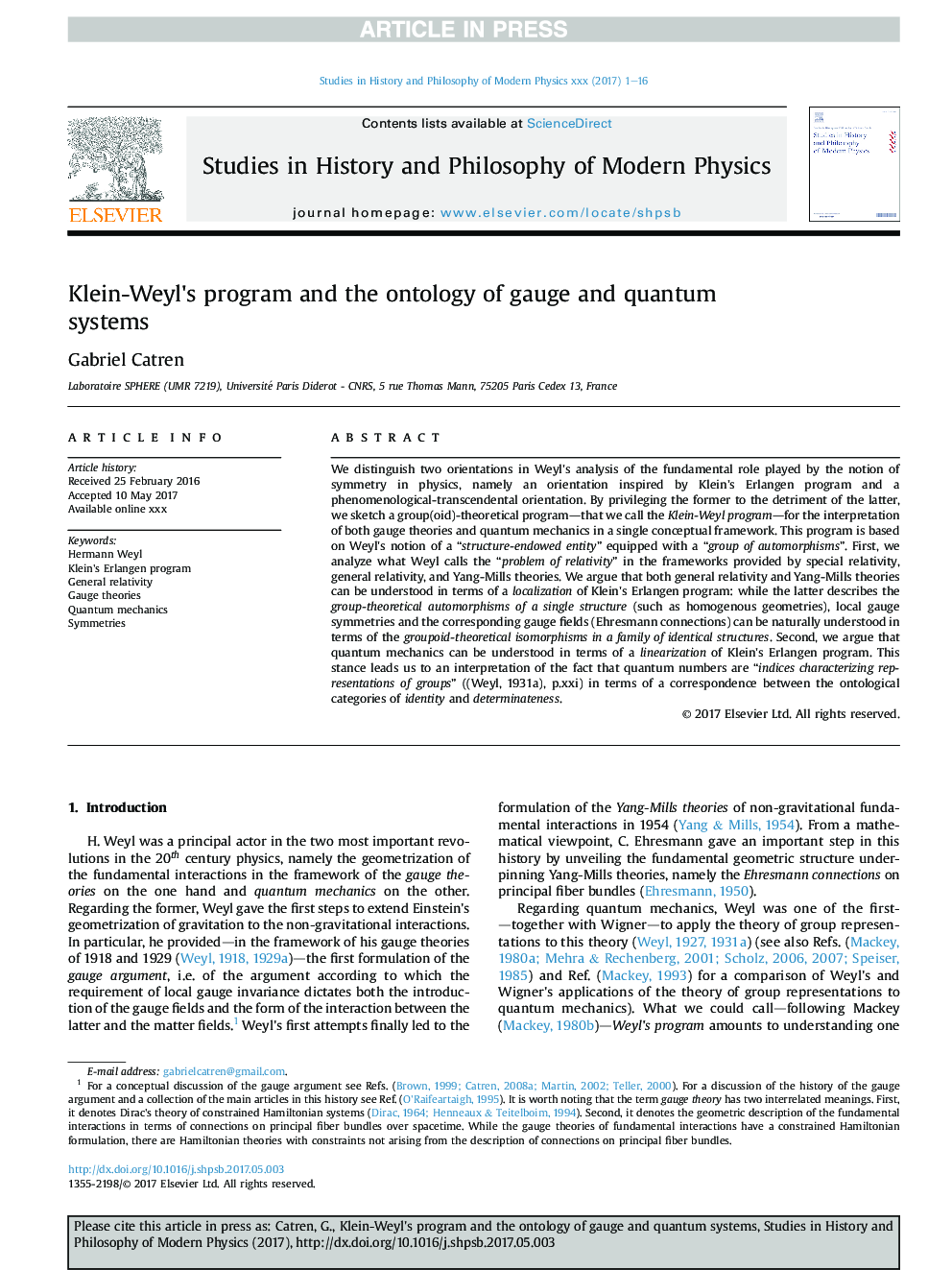| Article ID | Journal | Published Year | Pages | File Type |
|---|---|---|---|---|
| 7551882 | Studies in History and Philosophy of Science Part B: Studies in History and Philosophy of Modern Physics | 2018 | 16 Pages |
Abstract
We distinguish two orientations in Weyl's analysis of the fundamental role played by the notion of symmetry in physics, namely an orientation inspired by Klein's Erlangen program and a phenomenological-transcendental orientation. By privileging the former to the detriment of the latter, we sketch a group(oid)-theoretical program-that we call the Klein-Weyl program-for the interpretation of both gauge theories and quantum mechanics in a single conceptual framework. This program is based on Weyl's notion of a “structure-endowed entity” equipped with a “group of automorphisms”. First, we analyze what Weyl calls the “problem of relativity” in the frameworks provided by special relativity, general relativity, and Yang-Mills theories. We argue that both general relativity and Yang-Mills theories can be understood in terms of a localization of Klein's Erlangen program: while the latter describes the group-theoretical automorphisms of a single structure (such as homogenous geometries), local gauge symmetries and the corresponding gauge fields (Ehresmann connections) can be naturally understood in terms of the groupoid-theoretical isomorphisms in a family of identical structures. Second, we argue that quantum mechanics can be understood in terms of a linearization of Klein's Erlangen program. This stance leads us to an interpretation of the fact that quantum numbers are “indices characterizing representations of groups” ((Weyl, 1931a), p.xxi) in terms of a correspondence between the ontological categories of identity and determinateness.
Related Topics
Physical Sciences and Engineering
Physics and Astronomy
Physics and Astronomy (General)
Authors
Gabriel Catren,
